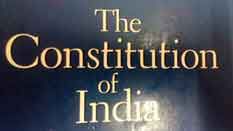Hierarchy of Authority of Courts
According to the principle of judicial hierarchy, higher courts have authority
over lower courts within the judicial system, and as such, lower courts are
bound to follow the decisions and precedents set by higher courts. This means
that a court must adhere to the rulings and precedents established by courts
above it in the hierarchy, ensuring consistency and uniformity in the
application of law throughout the judicial structure. For example, a High Court
Judge is required to uphold decisions handed down by the Supreme Court, while a
judge in a District Court must respect rulings from their respective High Court.
On the other hand, courts are not bound by decisions made by lower courts or courts of equal standing. While these decisions may be considered, they are not obligated to follow them as binding precedent. In the past, courts strictly adhered to their own previous decisions, a practice known as 'Auto Limitation.' However, in contemporary judicial practice, courts have more flexibility in departing from their own precedents. This departure from prior decisions is referred to as 'overruling' or 'deviation.' However, such deviations must be infrequent and well-justified.
Courts are expected to provide sound reasoning for departing from their own earlier rulings, ensuring that legal consistency is maintained while also allowing for the evolution of legal doctrine in response to changing circumstances or societal needs. This approach allows for the development of the law while still maintaining the hierarchical structure of the judicial system.
The judicial system maintains its integrity and fosters a progressive legal system by striking a balance between the need for stability and the necessity for adaptability and growth. This allows the courts to fulfil their duty as protectors of justice and preservers of the rule of law, ensuring that legal principles remain applicable and efficient in addressing the intricacies of modern society.
In India, the hierarchy of precedence is as follows, descending from highest to lowest authority:
The hierarchical structure of the judiciary is highlighted by the principle that only the decisions of the Supreme Court and High Courts are considered authoritative precedents and have binding effect on lower courts, while decisions of other courts like district or sub-divisional courts lack such authority. This principle plays a crucial role in promoting consistency and coherence in the application of law within the judicial system.
At the core of this principle lies the distinction between ratio decidendi and obiter dicta in judicial decisions. The former refers to the legal reasoning or the underlying principle of law on which the decision is based, while the latter encompasses incidental or ancillary remarks made by the judge that are not essential to the decision.
For a decision to serve as a binding precedent, it must embody the ratio decidendi, which represents the fundamental legal principle established during the adjudication process. This principle should emerge from the application of law to the facts of the case and be integral to the court's reasoning in reaching its verdict.
In contrast, obiter dicta, being extraneous to the decision's legal foundation, lack the authoritative weight of ratio decidendi. These remarks may provide insights, opinions, or observations on legal matters but do not form the basis for the court's ruling and are therefore not binding on lower courts.
The requirement that decisions of higher courts be based on ratio decidendi highlights the importance of judicial deliberation and the application of legal principles in resolving disputes. It ensures that precedents established by superior courts are rooted in sound legal reasoning and reflect the judiciary's role in interpreting and clarifying the law.
The judiciary upholds the principle of promoting legal certainty, predictability, and the development of jurisprudence while maintaining the integrity of the judicial process. This also strengthens the hierarchical structure of the judicial system, clearly defining the responsibilities and power of various courts in shaping legal principles and influencing judicial rulings.
Written By: Md.Imran Wahab, IPS, IGP, Provisioning, West Bengal
Email: [email protected], Ph no: 9836576565
On the other hand, courts are not bound by decisions made by lower courts or courts of equal standing. While these decisions may be considered, they are not obligated to follow them as binding precedent. In the past, courts strictly adhered to their own previous decisions, a practice known as 'Auto Limitation.' However, in contemporary judicial practice, courts have more flexibility in departing from their own precedents. This departure from prior decisions is referred to as 'overruling' or 'deviation.' However, such deviations must be infrequent and well-justified.
Courts are expected to provide sound reasoning for departing from their own earlier rulings, ensuring that legal consistency is maintained while also allowing for the evolution of legal doctrine in response to changing circumstances or societal needs. This approach allows for the development of the law while still maintaining the hierarchical structure of the judicial system.
The judicial system maintains its integrity and fosters a progressive legal system by striking a balance between the need for stability and the necessity for adaptability and growth. This allows the courts to fulfil their duty as protectors of justice and preservers of the rule of law, ensuring that legal principles remain applicable and efficient in addressing the intricacies of modern society.
In India, the hierarchy of precedence is as follows, descending from highest to lowest authority:
- Full Bench of Supreme Court
- Division Bench of Supreme Court
- Single Judge of Supreme Court
- Full Bench of High Court
- Division Bench of High Court
- Single Judge of High Court
The hierarchical structure of the judiciary is highlighted by the principle that only the decisions of the Supreme Court and High Courts are considered authoritative precedents and have binding effect on lower courts, while decisions of other courts like district or sub-divisional courts lack such authority. This principle plays a crucial role in promoting consistency and coherence in the application of law within the judicial system.
At the core of this principle lies the distinction between ratio decidendi and obiter dicta in judicial decisions. The former refers to the legal reasoning or the underlying principle of law on which the decision is based, while the latter encompasses incidental or ancillary remarks made by the judge that are not essential to the decision.
For a decision to serve as a binding precedent, it must embody the ratio decidendi, which represents the fundamental legal principle established during the adjudication process. This principle should emerge from the application of law to the facts of the case and be integral to the court's reasoning in reaching its verdict.
In contrast, obiter dicta, being extraneous to the decision's legal foundation, lack the authoritative weight of ratio decidendi. These remarks may provide insights, opinions, or observations on legal matters but do not form the basis for the court's ruling and are therefore not binding on lower courts.
The requirement that decisions of higher courts be based on ratio decidendi highlights the importance of judicial deliberation and the application of legal principles in resolving disputes. It ensures that precedents established by superior courts are rooted in sound legal reasoning and reflect the judiciary's role in interpreting and clarifying the law.
The judiciary upholds the principle of promoting legal certainty, predictability, and the development of jurisprudence while maintaining the integrity of the judicial process. This also strengthens the hierarchical structure of the judicial system, clearly defining the responsibilities and power of various courts in shaping legal principles and influencing judicial rulings.
Written By: Md.Imran Wahab, IPS, IGP, Provisioning, West Bengal
Email: [email protected], Ph no: 9836576565
Law Article in India
Legal Question & Answers
Lawyers in India - Search By City
LawArticles
How To File For Mutual Divorce In Delhi

How To File For Mutual Divorce In Delhi Mutual Consent Divorce is the Simplest Way to Obtain a D...
Increased Age For Girls Marriage

It is hoped that the Prohibition of Child Marriage (Amendment) Bill, 2021, which intends to inc...
Facade of Social Media

One may very easily get absorbed in the lives of others as one scrolls through a Facebook news ...
Section 482 CrPc - Quashing Of FIR: Guid...

The Inherent power under Section 482 in The Code Of Criminal Procedure, 1973 (37th Chapter of t...
The Uniform Civil Code (UCC) in India: A...

The Uniform Civil Code (UCC) is a concept that proposes the unification of personal laws across...
Role Of Artificial Intelligence In Legal...

Artificial intelligence (AI) is revolutionizing various sectors of the economy, and the legal i...








Please Drop Your Comments